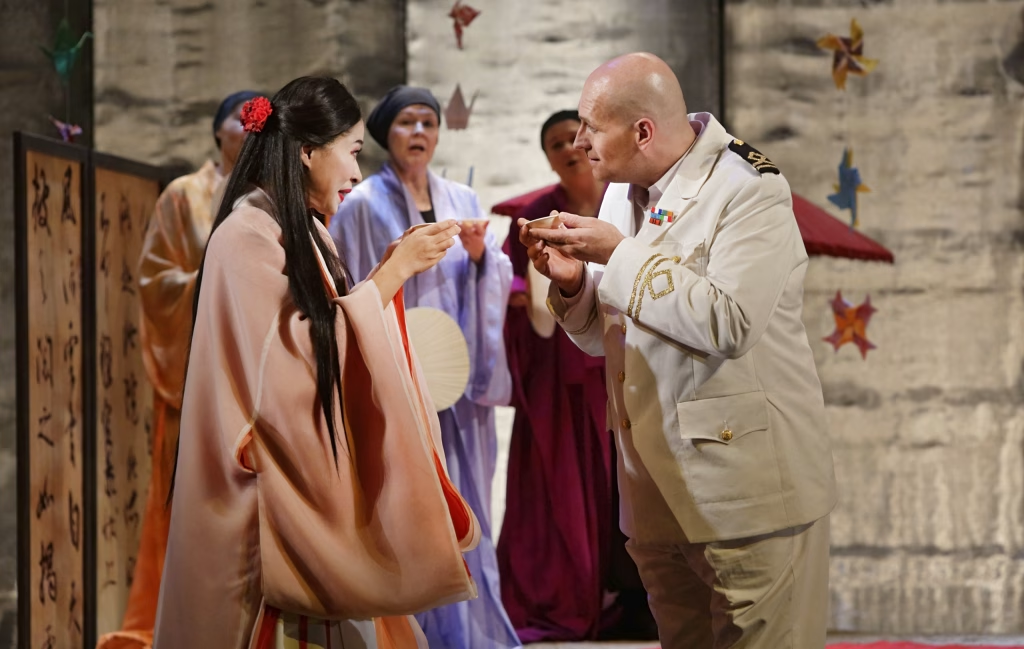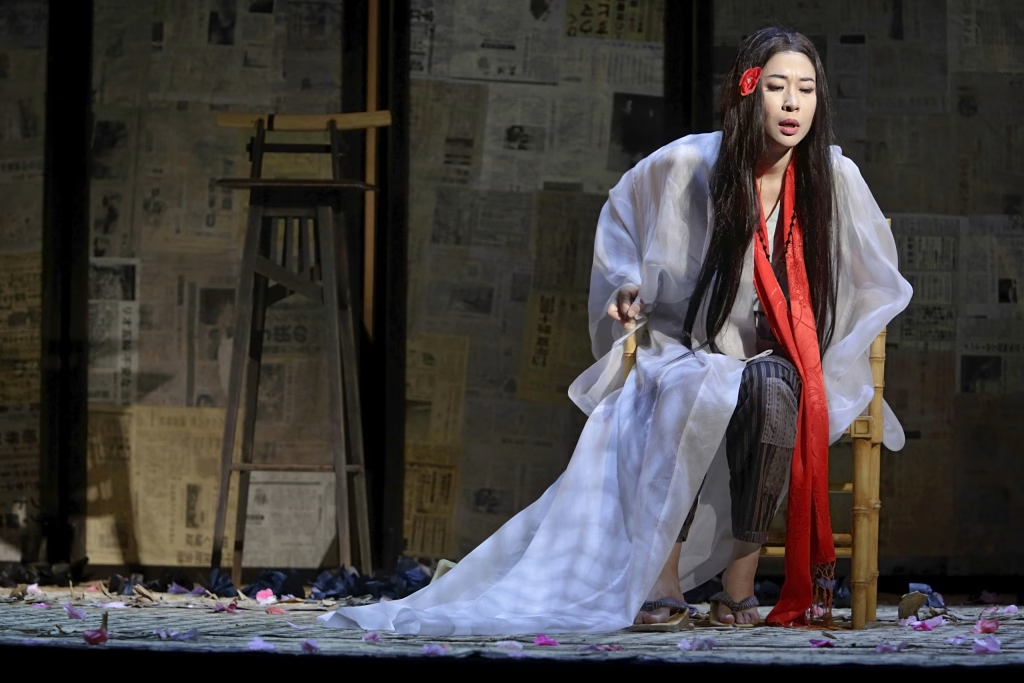
Madama Butterfly: a Japanese perspective
The story of Giacomo Puccini’s Madama Butterfly, which premiered in Milan in 1904, is set in Japan. Pianist Kumi Shimozaki discusses the history of the opera classic and its links to Japanese culture.
When a narrative is set within a foreign culture, it’s always difficult to avoid perpetuating cultural and ethnic stereotypes. Madama Butterfly is no exception, and its unquestionable Orientalism is a recurring point of discussion. However, the opera can also be interpreted from another perspective. Unlike, for example, the comic opera Mikado (1885), Madama Butterfly does not conflate East Asian countries or contain overt mockery of ethnicity or culture. Puccini offered to compose the opera immediately after seeing David Belasco’s original play Madama Butterfly in 1900, and the allure of the work arises from both the significantly adapted libretto and the musical expression that reaches beyond the typical Orientalism found in the play.
”The opera abounds with foreshadowing and detailed references to Japanese culture, thinking, and music.”
Puccini’s thorough knowledge of his source material is reflected in the way he employs musical elements to convey the drama. It’s notable that he chose to include many Japanese songs, which are still well-known today, such as the traditional melody ‘Sakura sakura,’ the national anthem ‘Kimigayo,’ and the march ‘Miyasan miyasan.’ In the first act, for instance, there is a scene where Pinkerton is presented with Cio-Cio San’s samurai father’s short sword, which he used to perform the traditional warrior’s suicide, seppuku. It may seem surprising that the background music features the melody ‘Sakura sakura,’ symbolising cherry blossoms. In effect, however, this demonstrates a deeper understanding of Japanese culture: in Japanese symbolism, the transience represented by the brief blossoming of cherry trees is often equated with death. The use of ‘Sakura sakura’ can be read as a musical simile, which draws a parallel between samurais and the transience of cherry blossoms. At the same time, it may foreshadow Cio-Cio San’s fate.
The opera abounds with similar foreshadowing and detailed references to Japanese culture, thinking, and music. Puccini owes a great deal of this to Hisako Ōyama, who introduced him to Japanese culture in Milan. Ōyama, the wife of Japanese Ambassador Tsunasuke Ōyama, had a solid background in music, and was a close friend of violinist and composer Nobu Kōda. Puccini sought information from her, and she went as far as acquiring sheet music, recordings, and other materials directly from Japan. It’s important to remember that in the early 1900s, Japan had only recently opened its doors to the rest of the world after centuries of isolation and was not yet widely known or influential on the global stage. Puccini clearly had a genuine desire to gather as much authentic knowledge from Japan as possible, given that it was not readily accessible.

When Madama Butterfly premiered in Milan in February 1904, the audience reception was lukewarm. However, when a revised version was performed three months later in Brescia, the opera became tremendously successful. What happened between these performances? Aside from the obvious reason of alterations to the libretto, it’s easy to overlook that the Russo-Japanese War also contributed to the opera’s newfound success. Japan’s recent victories, which eventually culminated in an all-out win in the war, raised the international profile of the small East Asian island nation, rendering an opera set in Japan much more intriguing. Ironically, if Japan’s fortunes in the war had been different, Madama Butterfly’s reception might never have improved from its initial premiere. This serves to highlight how external, unrelated circumstances can impact the attraction of another culture.
History also resonates in the opera’s setting. Nagasaki, located on the island of Kyushu in southwestern Japan, is universally known like Hiroshima, primarily for the atomic bombing in 1945. However, Nagasaki also stands out with its deep-rooted connection to Christianity, which is more pronounced than anywhere else in Japan. Consequently, the area has faced persecution from Buddhists. In Madama Butterfly, there’s a clear sense of the profound conflict between Buddhism and Christianity. For instance, Cio-Cio San’s uncle reacts furiously to her conversion to Christianity after marrying Pinkerton – as Buddhism was a significant part of the samurai identity. To Cio-Cio San, the conversion to her husband’s faith represents selfless love, but her uncle sees it as a denial of her roots and ancestry. It’s a grave, unforgivable transgression.

In Nagasaki of the time, many women became “local wives” to foreign soldiers and merchants stationed in Japan. However, Cio-Cio San is an exception even in this group. She comes from a high-ranking samurai family, and being just 15, she likely believes Pinkerton’s beautiful words and doesn’t fully comprehend her position as the American’s fleeting romance. The opera maintains the somewhat orientalist backdrop of the original play, but it also addresses some of its shortcomings in character development.
In the opera, Cio-Cio San herself is stronger-willed than in the original play, in which she appears uncertain and rarely asserts herself. The initially self-centred, imperialistic Pinkerton, on the other hand, genuinely regrets his recklessness in the latter half of the story, as he realises that the doting Cio-Cio San has been faithfully waiting for him. It’s probable that Pinkerton had no cultural understanding of the events and their consequences before the opera’s tragic ending.
In this regard, Puccini’s opera also reflects the importance of cultural encounters and changes, though from the perspective of its own time. The way people perceive the world depends upon their environment and experiences. And while experiences enrich our lives, they can also lead to the wrong decisions. Life often requires us to challenge ourselves and question our unconscious beliefs and prejudices. Operas like Madama Butterfly and the power of art provide ample opportunity for this.
Text KUMI SHIMOZAKI
Writer is pianist and musicologist
Photos HEIKKI TUULI

